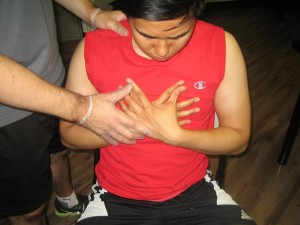Chronic obstructive pulmonary disease (COPD) is basically a collection of lung conditions including emphysema, chronic bronchitis and chronic obstructive airway disease. Individuals who were diagnosed with COPD can experience difficulty breathing mainly due to the constriction of the airways which is called airflow obstruction.
What are the symptoms of COPD?
- Persistent coughing with phlegm production
- Increasing breathlessness when active
- Frequent chest infections
Close look on COPD

The main cause of COPD is no other than smoking. The risk for developing the condition increases the more the individual smokes and the longer he/she has been smoking. It is important to note that smoking irritates and inflames the lungs which lead to scarring.
Throughout the years, the inflammation can cause permanent changes in the lungs. The walls of the airways become thick and there is increased mucus production. The damage on the delicate air sac walls can lead to emphysema and the lungs lose their normal elasticity. The constricted airways also end up scarred and narrowed further. These changes can lead to the symptoms of cough, breathlessness and phlegm linked with COPD. In some cases, the condition is caused by dust, fumes, air pollution and genetic disorders, but these are considered uncommon.
Who are at risk?
COPD is one of the common respiratory conditions that affect millions all over the globe. It typically affects individuals over 35 years old but most are not diagnosed until they reach their 50s.
Those who develop the symptoms of the condition do not seek medical care since they often believe that the symptoms are “smoker’s cough”. In addition, COPD affects more men than women but the rates among women are steadily increasing.
Diagnosis
It is vital to note that COPD is diagnosed as early as possible so that treatment can be started to slow down the deterioration of the lungs. A doctor must be consulted if any of the mentioned symptoms are present.
The condition is diagnosed after a consultation with a doctor that might be followed by breathing tests.
Treatment
Even though the damage to the lungs could not be reversed, the progression of the disease can be slowed down. The individual should stop smoking which has proven to be effective.
The available treatment options for COPD involve relieving the symptoms using medications such as an inhaler to promote easier breathing. In some cases, pulmonary rehabilitation can also help increase the exercise the individual can engage in. Only a few cases might require surgery.
Life with COPD
It is important to note that COPD can affect life in various ways, but help is readily available to minimize its impact on the life of the individual. Simple steps such as staying active, learning proper breathing techniques and taking the right medications can help minimize the symptoms of COPD.
